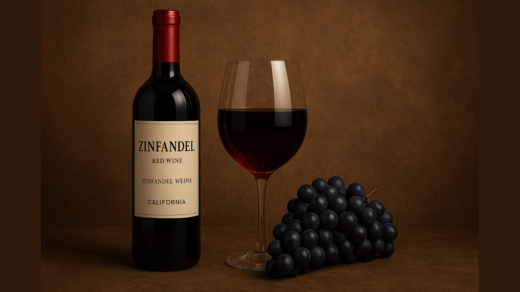When it comes to full-bodied red wines that carry history, character, and a burst of flavor in every sip, few varietals stand out like Zinfandel. With a heritage that spans continents and a personality that captures the sunny soul of California, this grape has evolved into a symbol of bold winemaking. Whether you’re a casual wine drinker or a seasoned sommelier, there’s something captivating about Zinfandel’s deep flavors, spicy undertones, and old-world roots.
Let’s dive into the unique world of Zinfandel—from its fascinating background to the diverse ways it’s enjoyed around the globe.
A Grape with a Global History
Zinfandel may now be deeply associated with the American West Coast, but its story actually begins much further away. Genetic research has revealed that Zinfandel is identical to an ancient Croatian grape variety called Crljenak Kaštelanski. It also shares a close relationship with Italy’s Primitivo grape, grown mainly in Puglia.
These European relatives point to a long lineage, one that eventually crossed the Atlantic in the early 1800s. Once it reached American soil, Zinfandel was quick to impress, particularly with grape growers in California. Its resilience, productivity, and rich flavors made it a natural choice for California vineyards. Over time, it became a favorite for both winemakers and wine lovers alike.
Flavor Profile of Zinfandel Red Wine
Now, let’s talk taste. Zinfandel Red Wine is known for being bold and fruit-forward, often brimming with ripe notes of blackberry, cherry, raspberry, and plum. Depending on where it’s grown and how it’s aged, it can also carry hints of pepper, cinnamon, and even chocolate or tobacco. These layers of flavor make it an exciting wine for the palate—one that evolves in the glass and complements a wide variety of foods.
Zinfandel also tends to have higher alcohol levels than many other red wines, typically ranging from 14–16%. This adds to its rich, full-bodied feel and gives it a warming character that’s perfect for sipping slowly. Despite its power, good Zinfandels remain balanced, thanks to the grape’s natural acidity.
The European Twist: Zinfandel Weine
In recent years, Zinfandel Weine have been gaining attention in the European wine market, particularly in Germany, Austria, and Switzerland. The term is simply the German phrase for “Zinfandel wines,” but it reflects a growing appreciation for this once uniquely American varietal.
European wine drinkers are increasingly exploring bolder, more expressive wines, and Zinfandel fits that bill perfectly. Some even compare it to the better-known Syrah or Shiraz, though Zinfandel’s juicy core and spicy finish give it a personality all its own.
While European-grown Zinfandel is rare, American exports—especially from California—are making their way into wine shops and restaurants across Europe, often marketed as something exotic yet accessible. Whether enjoyed alongside traditional German cuisine or paired with Mediterranean dishes, Zinfandel is finding new fans abroad.
California Zinfandel: A Regional Star
When you think of California Zinfandel, think of sunshine, old vines, and terroir-driven expression. California is the heartland of Zinfandel production, with some vines dating back over 100 years. Regions like Sonoma’s Dry Creek Valley, Napa Valley, Lodi, and Paso Robles are particularly famous for producing high-quality Zinfandels that range from spicy and robust to silky and elegant.
Old vine Zinfandels, in particular, are highly prized. These vines produce fewer grapes, but the fruit is intensely concentrated, leading to wines with exceptional depth and complexity. It’s not uncommon for a bottle of old vine Zinfandel to offer notes of bramble, clove, licorice, and jammy black fruits—all wrapped up in a velvety texture.
California winemakers have also embraced innovation, crafting different styles of Zinfandel from rosés to dessert wines. However, it’s the dry, red, oak-aged versions that truly showcase the grape’s potential. These wines are incredibly food-friendly and versatile enough to enjoy year-round.
Food Pairings and Serving Tips
Zinfandel’s rich and spicy profile makes it a great partner for bold flavors. Think barbecue ribs, smoked brisket, pizza, chili, or even Indian and Moroccan dishes with a bit of heat. The wine’s fruitiness balances out spices, while its tannins cut through fatty meats beautifully.
For best results, serve your Zinfandel slightly below room temperature—around 60–65°F (15–18°C). This helps preserve its bright fruit notes while taming the alcohol’s warmth.
Don’t forget to decant! Especially with older or more complex bottles, a little time to breathe can open up all those delicious, hidden layers of flavor.
Final Sip
Zinfandel is more than just a grape—it’s a story of migration, adaptation, and reinvention. From ancient European roots to bold American expressions, this varietal has captured the imagination of wine lovers around the world. Whether you’re sipping a classic Zinfandel Red Wine, exploring the growing market for Zinfandel Weine, or indulging in a bold bottle of California Zinfandel, one thing is certain: this grape brings passion, history, and unforgettable flavor to every glass.
So, the next time you want to impress your dinner guests or simply treat yourself to something rich and full of character, reach for Zinfandel. You won’t be disappointed.

